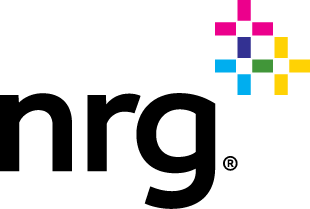Commitment to Customers, Transparency, and Decarbonization
A Q&A with NRG's Vice President of Sustainability, Jeanne-Mey Sun, Ph.D.

Originally published on NRG Energy Insights
Alongside our power values, our sustainability framework is a cornerstone to the development and evolution of our business. Please enjoy this extended Q&A session with Jeanne-Mey Sun, Vice President of Sustainability, elaborating on our progress, goals, and future at NRG.
Q: As you look back on sustainability at NRG in 2022, what were some of the highlights?
A: 2022 was another year of progress, made possible by collaboration and innovation both internally and externally. Three priorities guided our work. First, we continued to report our sustainability strategy, governance, plans, and progress to our stakeholders as transparently as possible, following the most widely accepted standards. In 2022, we:
- Reported International Financial Reporting Standards (IFRS) metrics for the 7th year¹
- Issued our 2nd annual report on the climate positions of our disclosed membership organizations as a supplement to our 4th annual public policy and political contributions disclosure
- Updated the sustainability data file accompanying this Report to include both 2022 data and additional years of historical data for certain metrics, enabling trend analysis over a longer time horizon
- Updated our list of “Further Reading”, showcasing the many additional NRG publications on sustainability-related topics to guide readers who wish to delve deeper into a particular subject
- Finally, we incorporated our 13th year of sustainability reporting into this broader format Year-in-Review Report. In addition to covering the usual sustainability topics, this Report also describes NRG’s corporate strategy and highlights the tight link to our sustainability strategy.
As always, we welcome your feedback on our reporting and how it can be further improved.
Second, we strengthened our greenhouse gas (GHG) emissions data gathering, methodology documentation, and reporting processes and controls. I asked NRG’s Internal Audit team to review our current processes and identify improvement opportunities. We then worked closely with the responsible functional groups – Plant Operations, Environmental, Real Estate, and Supply Chain – to address the Internal Audit findings. We also kept our Board’s Audit Committee informed on both the findings and their resolution throughout the process. I am very pleased with both the outcome – more robust GHG emissions reporting processes and controls – and with the collaboration we had across the Company and with our Board. We also continued to obtain third-party assurance of our GHG emissions reporting.
Finally, we continued to engage with many types of stakeholders – investors, customers, industry groups, academia, and government and non-government organizations – who are each working to advance some aspect of the energy transition. Our focus included decarbonization pathways (electrification, carbon capture, use, and storage, hydrogen, and reducing the carbon footprint of the natural gas supply chain), proposed sustainability reporting rules and standards, and the climate-tech start-up ecosystem, which we believe will help us identify technologies and partners that could help both NRG and our customers decarbonize.
Q: What are you working on now that excites you most?
A: Three inter-related areas:
First, we continued to support our customers with the achievement of their sustainability goals. As described further in the Customers chapter of this Report, we continue to provide various sustainable products and services for both our residential and business customers:
- Renewable electricity including subscriptions customized for specific needs such as electric vehicle charging, integration with rooftop solar and storage systems, and community solar
- Certified carbon offsets and renewable electricity credits allowing customers to compensate for their consumption of natural gas, gasoline, and fossil fuel-fired electricity
- Energy storage and resilience solutions
- Demand-side solutions, including time-of-use plans and demand response programs that reward customers for using less electricity
- Sustainability concierge and advisory services, including support for residential rooftop solar and storage systems, electric vehicle fast charger installation, and bespoke electricity and natural gas supply solutions for business
Second, we recently acquired Vivint Smart Home, whose mission is to help customers create a more connected, energy-efficient, and safer home. Like NRG’s suite of sustainable solutions, Vivint’s portfolio encompasses both supply- and demand-side energy management offerings like rooftop solar (panels, batteries, and inverters), smart lighting, and smart thermostats. Whether used individually or together, these offerings help customers manage their energy consumption and can reduce their carbon footprints in the process. We are eager to integrate Vivint’s portfolio and further expand the platform from which we can offer customers more choices over their energy – its source, type, quantity, and how and when it’s consumed.
Third, we recognize that recent acquisitions – including Direct Energy in 2021 and Vivint Smart Home in 2023 – have broadened NRG’s business activities beyond electricity generation. As such, we are in the process of quantifying our Scope 3 GHG emissions – the emissions that we don’t directly control, both upstream and downstream of NRG in our value chain. We are also quantifying the emissions we help customers avoid through their use of the sustainable products and services we provide them. When complete, this work will encompass both legacy NRG and Vivint sustainable products and services.
Q: What keeps you up at night?
A: Meeting our climate goals² – while also ensuring that the energy we provide to our customers remains both reliable and affordable, the so-called energy trilemma. For several years, these three imperatives were aligned with one another: over 2014-2022, our GHG emissions decreased by 42%, driven by a reduction in power generation and a market-driven shift away from coal-fired toward natural gas-fired generation. In 2022, however, our GHG emissions increased relative to 2021, driven by increased generation, which in turn was driven by power market conditions and weather. In particular, the price of natural gas increased relative to the price of coal in the wake of the Russia-Ukraine war, making it more economic to generate electricity using coal relative to gas, and thereby increasing emissions.
As a competitive energy provider, NRG competes for its customers every day. As such, we must serve the needs of customers that want to buy electricity, even when it has a relatively high carbon intensity. Moreover, there are rules governing the shutdown of power plants in the market. Even when NRG wishes to retire a fossil fuel-fired plant, we may be prevented from doing so for reliability reasons³. In addition to complying with these market rules, we have a fiduciary duty to preserve and enhance the financial performance of the Company.
We actively monitor various options to reduce the carbon intensity of our operations and the electricity we provide to our customers. Ultimately, I believe that our technology-agnostic approach to decarbonization will ensure that we have access to the lowest-cost solutions when they are economic at scale. In the near-term, we remain committed to offering renewable electricity to those customers that demand it, and as discussed in the Environment chapter, we are aggressively pursuing renewable power purchase agreements with third-party developers so we can bring even more renewable electricity to our customers.
¹Formerly known as Sustainability Accounting Standards Board (SASB) metrics.
²NRG’s climate goals are to reduce GHG emissions by 50% by 2025 from the current 2014 base year and to achieve net zero by 2050. These goals encompass our directly controlled emissions (Scope 1), emissions from NRG’s purchased electricity (Scope 2), and emissions from employee business travel (category 6 of Scope 3).
³For example, in 2022 NRG continued to operate the 410 MW Indian River Unit 4 coal-fired plant under a Reliability Must-Run (RMR) agreement with independent system operator PJM. We had previously announced, in June 2021, our intention to shut down this facility. However, PJM identified reliability impacts resulting from the proposed deactivation. The RMR agreement is expected to end no later than December 31, 2026.

